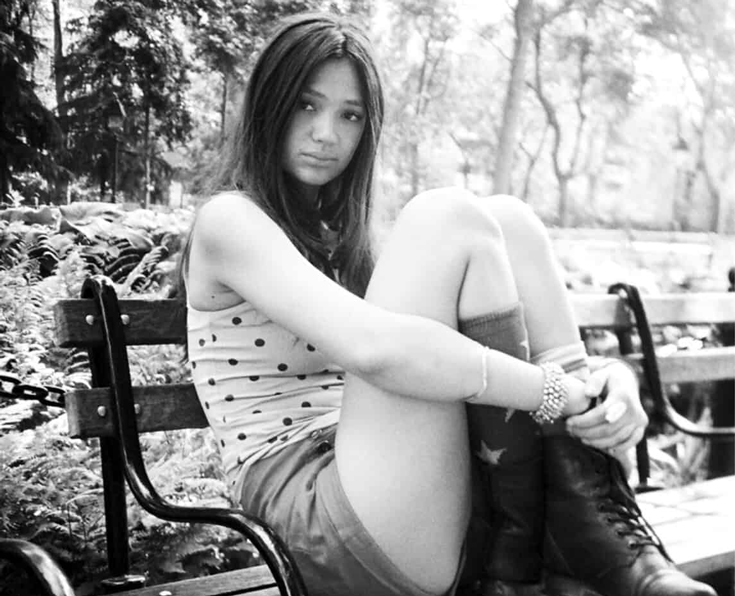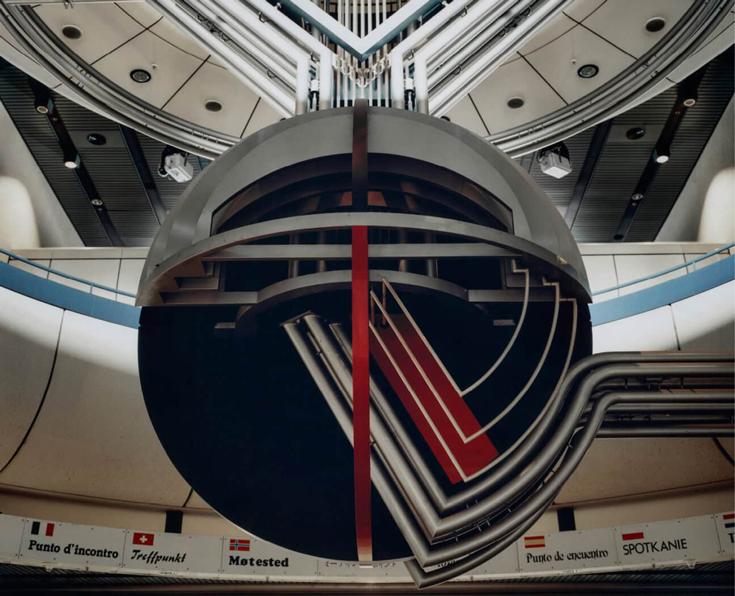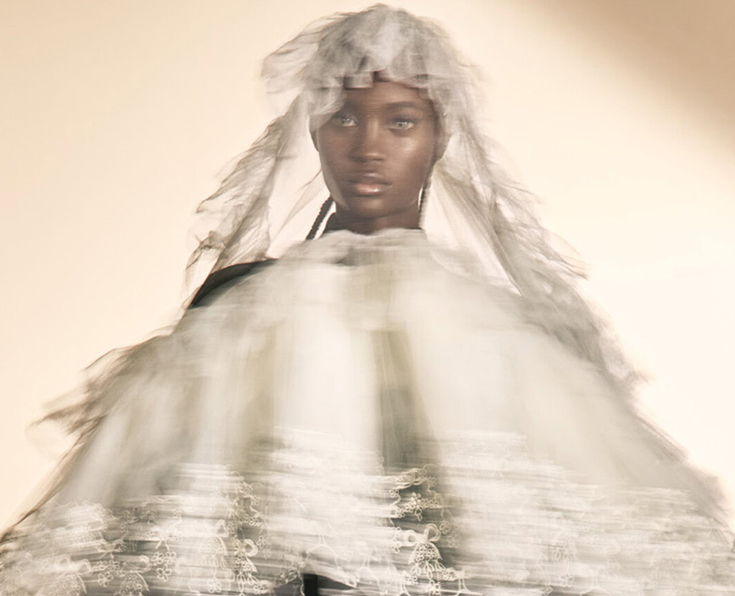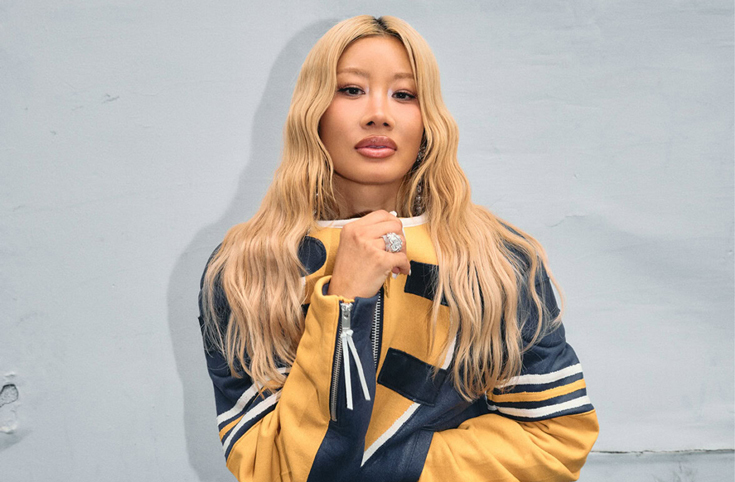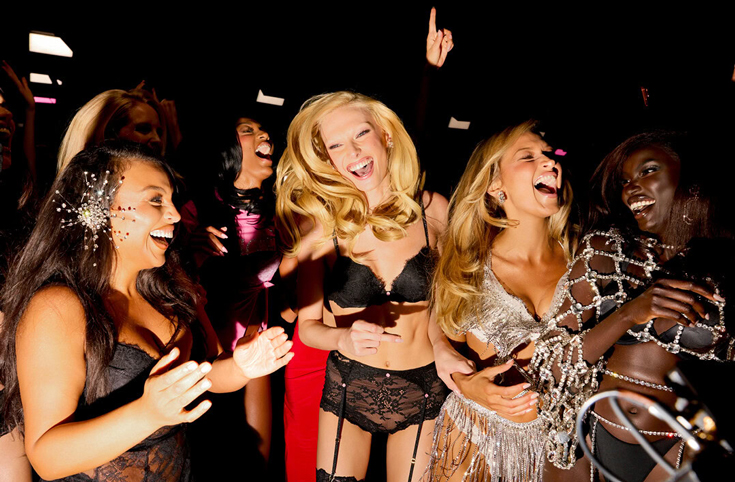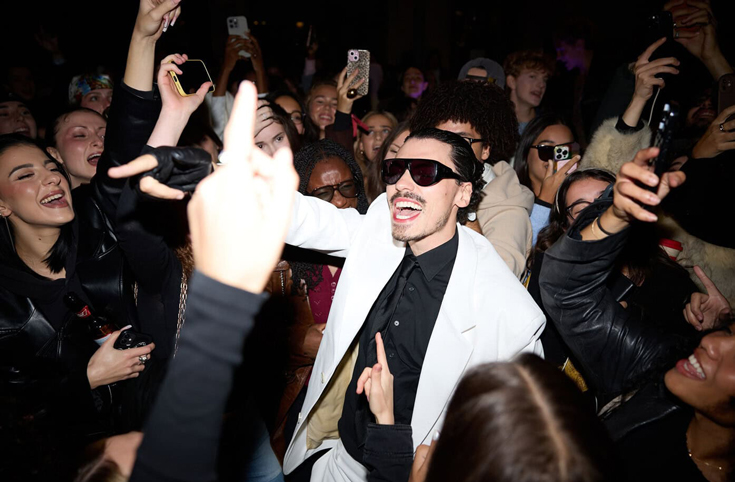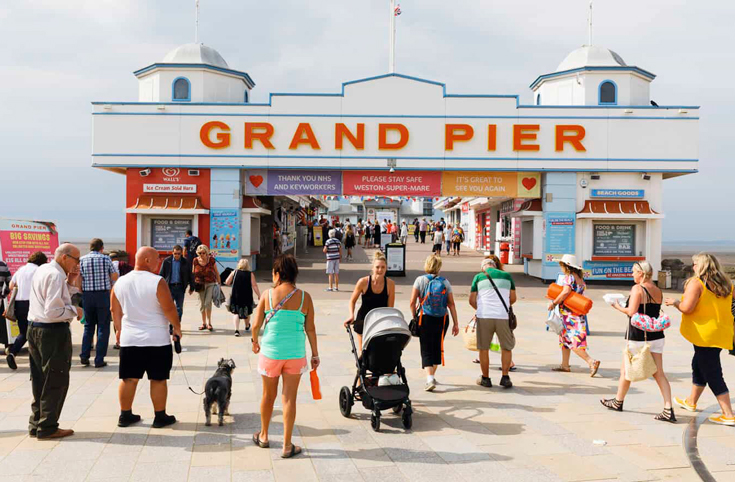ANDRE WALKER IS STILL THE KING OF NEW YORK

Andre Walker finds his creative nature “abundantly distracting”. Though the designer is a figure of cult admiration and his movements are the subjects of stories and myths, there is little regimen or commercial strategy to his endeavours. Instead, simply, when his interest is piqued, he gets excited and off he goes again and again. That interest can be in anything.
I get a sense of this when I call the New York fashion giant and find that he is in the middle of completing a watercolour. It takes him some time to pull his focus away from the painting so we can speak, but when he does direct his attention towards me he is generous and enthusiastic, and somewhat fascinated by the novelty of being interviewed.
At times, he tries to interview me, asking about my pursuit of journalism and interest in fashion – it’s clear that he is infinitely curious, as taken by great art and fashion as he is by great conversation.
The watercolour is being prepared among a collection of art pieces for a solo exhibition. He is guarded about the location – we’ll know when the time is right – but it speaks of previously exhibiting in group shows in New York with Anonymous and Gordon Robichaux, “for fun and because I like the galleries”. That Walker, 58, is an artist, not only in the technical sense of being a fashion designer but a painter, is something I hadn’t expected but was unsurprised by. He is an autodidact, one driven by wonder and curiosity, with such a relentless instinct for consuming and creating beautiful images that he is sometimes overwhelmed by them. But he is aware of himself. As he tells me, “prayer is constantly stamping out fear, as focus keeps insisting on my virtuous talents”, but creation also has a healing effect for Walker, so it is “continually sought-after and practised”. And so, whether it’s painting watercolours, consulting for a brand or collaborating on a collection, he is never idle.

Walker’s fascination with image has been nourished since he was a child. Born in London, his family moved to the US around 1973, where he was raised in Ditmas Park, Brooklyn. He would pore over magazines: “My mom had a subscription to W, which meant that I was regularly reading fashion columns about ready-to-wear designers in Paris and Italy. But my main excitement was always the Paris fashion previews and reports. I started reading Interview, French, British, Italian Vogue, Soho [Weekly] News, the Village Voice, East Village Eye. Really anything I could get my hands on with reports from the European runway scene.”
Walker remembers the first designers that grabbed him; his recollection of names and bank of references feel like stepping into the most fabulous time machine. He became “obsessed” by Anne-Marie Beretta, Thierry Mugler, Kenzo, Saint Laurent, Claude Montana, Tan Giudicelli, Chloé under Karl Lagerfeld. Sometimes, when he was particularly taken by an image, he would use tracing paper to draw the outline and then colour it in, writing the designer’s name next to it.
Eventually, Walker thought about having his own name in magazines. He intended to go to a fashion high school but his mother didn’t want that for him; instead, he attended a design engineering school called Brooklyn Technical High School. “I was studying architectural design and rendering, pattern-making for the foundry – meaning how to make and design tools like hammers and wrenches – and learning about perspective drawing and things like that.” By then, he had already made his first ventures into design. His parents were clothes horses and his mother owned a beauty salon. Outside it, Walker, at the age of 11, began selling T-shirts. He’d buy basic white tees that came in a three-pack and use fabric paint to adorn them with images of “punk rock people or New Romantic types”.

Walker was “so enamoured with the craft, the vocation and the work” of creating biannual collections that he found himself getting involved in the downtown scene of Manhattan Bridge, where he became immersed in creative subcultures and was surrounded by “style and image-making and photography”. He had a girlfriend, Rhonda Lewis, who taught him how to sew, “and from there on I was going insane buying fabrics and cutting things on the floor. That’s where the origins of that experimental aspect of my work started.” Walker is famed for launching his debut collection aged only 15 in the New York nightclub Oasis. When he looks back on that time he is candid about the “very magical, wild, fairytale-like existence” of the fashion world and also how such a precocious emergence meant he quickly had to learn that the process of image-making was not a purely artistic pursuit. “I was always focused on the end result, the design, the content. A lot of the business side of the thing escaped me. I mean, I knew I was making money and selling clothes, but it was really more like a personal hobby. When you start doing something so early it is important to understand that it is a business as well. That came later, obviously.”
Walker sold much of this debut collection to Patricia Field’s Greenwich Village boutique, an early indication of the value of his craft and the contemporaries he would catch the eye of. He was soon on the radar and working with the likes of Marc Jacobs and, latterly, Kim Jones. He first met Jacobs in the cult clothing boutique Charivari in New York – “I was buying a Matsuda trench coat” – and then again a few years later when they were participating in a group show for Paper. Walker was especially interested in the international field of designers. He created collections in New York but, after a final show in May 1986, began regularly travelling to Europe with an interest in debuting there. On the way to a show in Seville, he decided to pass by London to see his friend Cindy Palmano, who had photographed some of his work for i-D back in 1985. “I get to London and I meet [talent manager] Camilla Lowther, [designer] Tom Dixon, [creative director] Michael Howes, people like that.” By 1990, the model Carlos Taylor, a friend, introduced him to a financial backer, Bjorn Avalon, who sponsored Walker’s very first collection in Paris, which debuted in March 1991. This time, Walker was working with full-scale production and he was mesmerised by the possibilities of design-making in Europe. “I had an amazing time living in Paris and from there I had five collections up until March 1995.”


But it’s difficult for Walker to talk about the specifics of his collections, and even more difficult to locate them, because so much has been lost. We’re living in a time when we can flock to Vogue Runway and survey collections look by look, but many of Walker’s creations were one of a kind and sold, or have not been preserved through photographs. Indeed, while you can read about classics such as Walker’s “boring wrap dress”, visuals of his clothes are mostly limited to his last solo collection, an SS18 presentation at Musée des Arts Décoratifs, designed with fabrics provided by Pendleton that featured three-dimensional silhouettes, blankets, bold stripes, oversized gold safety pins, capes and quilts. “It’s so funny, I have three to five collections that I don’t have photographs for and obviously they were dear to me. I lost some videos, too. But I have a few things. And I do have one show from the ’80s which is incredible… I’m thinking about doing a screening with that but I want to wait until the platform and moment are right.”
Walker is someone who is invested in the practice of looking back through fashion archives with the precision of a historian, in search of what can be repurposed or learnt for the present and future of fashion. He loves “old clothes and a lot of vintage” and still has his nose buried in back issues of magazines, looking for past loves and references which he can pull into his work and be excited by all over again. But he is also a fan of the new. He names Kiko Kostadinov, Duran Lantink and Talia Byre as designers he is particularly excited by. He also praises Róisín Pierce’s recent AW23 collection. “I loved that it was almost looking very sanctimonious. I loved the fact that everybody looked like a bride. It was crazy. The aesthetics were incredible.”

Walker is particularly interested in the timelessness of clothes and the “utility” of a garment, which is something he feels is a strong factor of contemporary designers, particularly those he has selected as his “future collectibles”. “What I like about a lot of design right now is that it’s a lot less trend-driven and I feel like it’s maybe a little more an integrity-based utility garment which is being offered with hyper-awareness of design.” It means that he has opted for designers who have created clothes he feels are “easy to wear, yet remarkable somehow. Remarkable in the sense that it just gives you a feeling that you can wear it and be yourself and not feel self-conscious. Because after years of being insane about clothing and design and construction, at a certain point one becomes aware of the utility factor of the garment, not only its visual or sensual aspect.” It’s a philosophy which Walker carries forward in his personal wardrobe – he tells me that he is renowned for wearing the same clothes, sometimes in different colours, because he “loves clothing as uniform” so sometimes he’ll purchase four pairs of the same trainers, three of the same jumper and two of the same trousers.
Walker’s state of being in constant invention, a name that is known if you’re in the know, with a career that has focused on intrigue and artistry as opposed to names and clout, means he has dodged celebrity in a way that is intriguing considering his impressive portfolio and his close working and personal relationships with some of the biggest names in fashion. But it is a fact that he embraces. He is more interested in cycling around New York than attending red carpet events. He has twice avoided attending the Met Gala, even in 2021, the year of In America: A Lexicon of Fashion, where his own work was being exhibited, because he felt an anxiety about being faced with a sea of photographers. His favourite item from this year’s gala was Jared Leto’s Choupette cat suit before he took it off. “I would’ve kept it on. Mask me up, baby!”

Much of this is because Walker retains a primary interest in the work, clothes and fashion. He treats the latter not only as a business but as the world he has been consuming since he was a child, recalling his years of buying his mother Mugler suits and Beretta coats for her birthday. Walker is interested in people who “cherish” clothes, admire his work and connect with it – he is not looking for the visibility that might come with an A-lister wearing his clothes and feels it’s of limited value in any case. “Because sometimes you can sell a garment to a celebrity but you don’t have a thousand T-shirts to print to make money so what’s the point? Or are you really gonna sell 40 of those over-the-top ballgowns or whatever you’ve sold to a celeb?”
Walker feels that he has “under-asked” in his career, is keen to be less shy about what he wants in the fashion world, directly expressing his interest in a creative director role at a major fashion house, and is “lusty” to create a couture collection. He laughs infectiously, saying, “I wish they would just trust me, love me, and let’s go! I love the idea. You just have to see my sketchbooks and my designing practice. I’m an enthusiast.” And he has no interest in retiring, either; it’s not a concept he believes in and he has no concerns about his age. “I think of artists like Louise Bourgeois or Francis Bacon or Alice Neel or Arthur Jafa, David Hammons, whoever. I’m definitely not someone who believes in retiring at all. I love the idea of being like an ancient designer coming out at the end of the show. I have no problem with that.” For now, he carries on painting his watercolours as he continually nourishes his creative spirit. That this instinct has survived so many decades without any sign of fatigue or disillusionment is truly a thing of beauty.
Taken from Issue 71 of 10 Magazine UK– FASHION, ICON, DEVOTEE – on newsstands now.
Top image: Andre wears Bottega Veneta.


Photographer KEVIN HATT
Fashion Editor and Talent ANDRE WALKER
Text JASON OKUNDAYE
Fashion assistants GENE TYRAHNS, GEORGIA EDWARDS and SONYA MAZURYK

